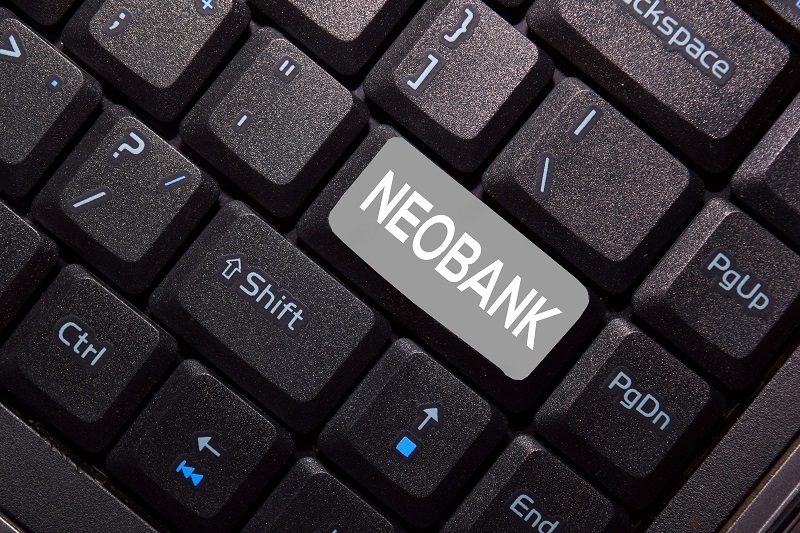
In the digital-first era of today, the management of money is evolving rapidly. If you are curious about what a neobank is, then you're not alone. As we move into 2025, neobanks, or digital-only banks, are disrupting the banking system with cool mobile apps, minimal fees, and tech-first services. These online-only services are particularly favored by millennials, Gen Z, and anyone fed up with the red tape of old-fashioned banks.
As digital banks take off in the U.S., the banking industry is changing, and so are customer expectations. But is a neobank right for you? In this complete guide, we will explain all you need to know about neobanks, compare them to conventional banks, and help you decide whether going digital is your best bet in 2025.
A neobank is a bank that exists only digitally, usually in the form of a mobile app or a website. It has no physical branches and usually deals with a licensed bank to insure the deposits using the FDIC. Since neobanks eliminate the costs of maintaining physical premises, they are able to provide lower fees and more streamlined services.
Unlike old-school banks, neobanks are designed from the ground up to deliver a mobile-first experience. You can sign up in minutes, receive real-time alerts, manage your spending, and send money—all through your phone.
Some typical neobank features are:
Neobanks hope to accelerate, simplify, and lower the cost of banking for today's digital-conscious users.
Choosing a neobank vs traditional bank is a significant decision, and understanding the services, customer experience, and functionality of both is paramount.
Neobanks are obsessed with digital-first interfaces. Their mobile apps are simple and full of features that enable customers to manage their money with ease. Traditional banks tend to be behind in app quality, where customers have to go to a branch for some services.
Neobanks charge lower fees because they have a digital-only business model. No monthly maintenance fees and overdraft fees are common. Mainstream banks, however, are known for their back-end fees and higher minimum balances.
Mainstream banks have a wider array of services such as mortgages, wealth management, and business loans. Neobanks are often limited to personal banking and might not have sophisticated financial products.
Traditional banks tend to have in-person support. Neobanks use live chat, email, or phone support. Though support is quick, some customers still prefer face-to-face support.
Some neobanks work in partnership with FDIC-insured banks to protect your deposits. Some consumers might still feel safer depositing their funds in a traditional brick-and-mortar bank.
It's important to know about the online-banking only advantages and disadvantages prior to making a switch to a neobank. Here's the rundown:
Over the past few years, the U.S. has experienced substantial expansion in digital banks. Businesses such as Chime, Varo, Current, and SoFi have become frontrunners in the sector, making them a threat to legacy banks such as Wells Fargo, Bank of America, and Chase.
Industry experts say over 45 million Americans made use of a neobank in 2024—a figure likely to increase in 2025. Why the change?
It's only natural to ask whether neobanks are secure. Although most neobanks aren't technically banks, they often have partnerships with licensed, FDIC-insured banks, which means your money is safe. That also means that your deposits are usually insured up to $250,000—just as in a conventional bank.
Security measures to expect from a good neobank:
Still, it's necessary to do your research. Check user reviews, look for FDIC protection, and make sure the company has a solid reputation before leaving your money in their hands.

If you're looking to give a neobank a try this year, here are a couple of highly-rated options:
When weighing these online alternatives, consider your needs: Do you need high-yield savings? Are you set on budgeting features? Do you need regular access to cash?
Neobanks are perfect for consumers who:
However, if you rely heavily on in-branch services, need access to business loans or mortgages, or feel uncomfortable with all-digital channels, an old-school bank is probably still a better choice for you.
Before jumping into digital-only banking, consider the following tips:
You can even go for a hybrid model—utilize a neobank for everyday spending and savings, but reserve a traditional account for other requirements.
So, what is a neobank, and is it for you? Neobanks represent the future of finance—lean, mobile-driven, and user-centric. If you’re tech-savvy, tired of bank fees, and crave convenience, a neobank may just be the upgrade your financial life needs in 2025.
However, they’re not a one-size-fits-all solution. It’s important to assess your banking habits, desired features, and comfort level with online-only platforms.
In brief: If online banking fits your way of life, today is the ideal time to discover what a neobank can do for you. As the number of digital banks in the United States continues to expand and controversy about neobanks versus traditional banks mounts, consumers have more options than ever.
Neobanks are changing the way we think about cash. Whether you want to slash bank charges, save money more efficiently, or simply need a better experience, these internet-first platforms deliver. With the battle between neobank vs traditional bank heating up, look for more innovation, improved rates, and increased convenience in the years to come.
Still not sure about what a neobank is? It's not just a fad—it's a revolution in banking. And in 2025, it may be exactly the banking solution you've been looking for.
This content was created by AI